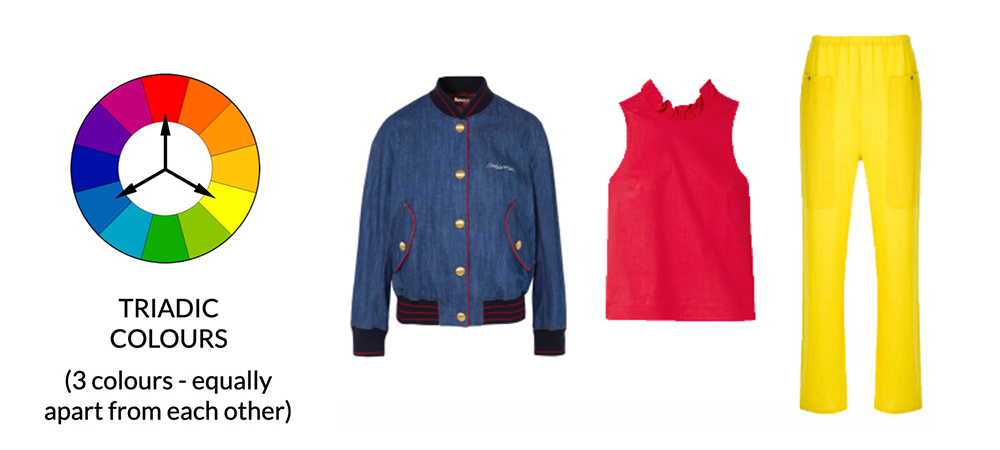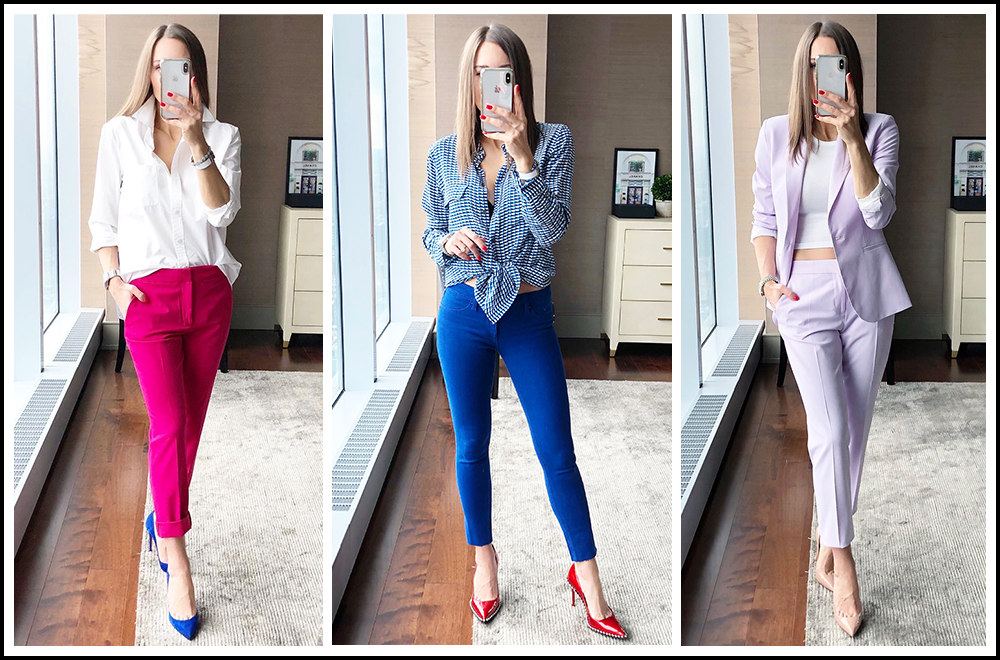May 26th, 2020
How to Combine and Wear Colours Like a Pro
If you’ve been following me on Instagram lately, you’ll have noticed a bit of colour popping up. (All of a sudden I’m obsessed!) As a result, it’s become quite clear that many women struggle with knowing how to combine colours or knowing which to wear together.
If you struggle as well, read below for my 3 Simple Tips as well as 5 Ways to Combine Colours. (If it looks familiar it’s because I’ve taken it right out of my new eCourse The 6 Week Style Transformation.)
3 SIMPLE TIPS
Tip #1
If you’re just starting out playing around with colour, or aren’t sure which colours to pair together, one way to keep colour combining simple is to pair pastels with pastels, jewel tones with jewel tones and earth tones with earth tones. No cross pollinating, because that’s where it can get tricky.
Tip #2
Another way to keep colour combining simple, is to dress monochromatically. That’s wearing one colour or various tints, shades or tones of one colour together. A tint is when white is added to a colour, a shade is when black is added to a colour and a tone is when white and black are both added to a colour in order to grey it down. Basically they’re just lighter, darker or more subdued versions of the same colour.
Tip #3
What you can also do, to keep things simple, is to choose one colour and add neutrals to enhance that colour and complete the look. Neutrals can be black, white, grey, beige or brown. Just make sure your neutrals go with the colour you chose.
5 WAYS TO COMBINE COLOURS
If you’re feeling bold and daring and want to combine multiple colours, but aren’t sure which to wear together, you can always turn to the Colour Wheel for ideas and inspiration.
I won’t go into great detail about the colour wheel (which I do in the eCourse), but I will say this – there are a number of different ways to combine colours based on the colour wheel that are generally pleasing to the eye. You can then transfer or reflect those combinations in your outfits. Just remember, first and foremost, to choose colours (especially close to your face) that are suited to your skin tone.
1. Complementary Colours
Complementary Colours are two colours that are directly opposite each other on the colour wheel and contrast each other. Like red and green, blue and orange, or yellow and purple. If you’ve ever wanted to colour block (wear two or more solid colours together), this is where you could start.

2. Split Complementary Colours
Split Complementary Colours are similar to complementary colours, but instead of matching a colour with its opposite, it matches it to the two colours adjacent to the opposite, for a total of three colours. For example red with teal and chartreuse. This is a great place to start if you want to combine three colours without going for an all out high contrast look.

3. Triadic Colours
Triadic Colours are 3 colours equally apart from each other on the colour wheel. In this case I’ve used the primary colours of red, blue and yellow. Here I have all 3 colours in somewhat equal proportion to each other, making a bolder statement than if doing one or two dominant colours.

4. Analogous Colours
Analogous Colours are 3 colours directly beside each other on the colour wheel. Here we have magenta, red and vermillion. Note how I’ve just used the magenta in the shoes. This definitely makes a less bold statement than if had I chosen a magenta coat over the top and pants.

5. Tetradic Colours
The Tetradic Colour Combination is 4 colours in total, consisting of two sets of complementary colours. In this case red and green and blue and orange. Definitely a colourful combination, but one you could have a lot of fun with. Here I’ve used one set of complementary colours (blue and orange) for the clothing and the other set (red and green) for the accessories. But how you pair them, is of course, up to you.

As you can see, there are endless ways to combine colours. With the only limits being your imagination. And your wardrobe!

